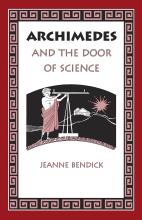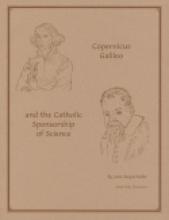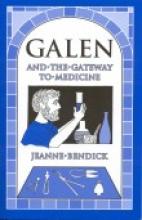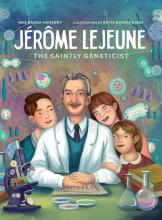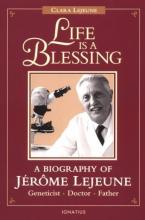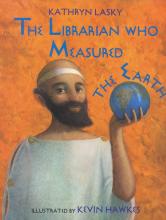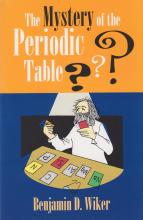Scientists
Archimedes and the Door of Science
Archimedes, the reknowned ancient Greek Scientist and Mathematician, had an enormous impact on all science and math since his time. This is his story, simply and even humorously told. The reader is introduced to many important concepts discovered and used by Archimedes including the lever, the pulley and his famous discoveries involving water displacement. (Numerous black and white drawings aid immensely in understanding these concepts). I love books which take concepts that have been made over-complex by modern textbooks and show how they are simple enough to be understood by children. Particularly interesting is the chapter entitled "The War Machines of Archimedes" which relates the story of his defense of Sicily by the use of Science: machines which hurled stones at the enemy and carefully designed mirrors which reflected sunlight on the enemy ships so intensely that they caught fire.
Homeschoolers will appreciate Laura Berquist's helpful hints (in the introduction) for incorporating this book into your own curriculum. Keep in mind that this isn't just a Science book – it's an appropriate addition to the study of Ancient Greece and a Math Supplement as well. The complete index is useful for referring to particular topics
Copernicus, Galileo and the Catholic Sponsorship of Science
The Galileo controversy is a big issue for Catholics and non-Catholics alike. Any number of resources commonly used by Catholic homeschoolers (such as Protestant high school science texts, certain biographies, novels, and many more) will portray this issue incorrectly. Homeschool parents teaching their children about faith and reason and homeschool students preparing to go out into the "real world" cannot afford to be clueless about this issue. I highly recommend this resource.
Galen and the Gateway to Medicine
Galen was born in 129 A.D. in present day Turkey (at that time part of the Roman Empire). When he studied medicine, medical training was very haphazard, but in his lifetime he revolutionized the idea of what a doctor should be, both by his example as a renowned doctor and his extensive writings on anatomy and pharmacology (some of which are still in existence today). His experience in treating patients from wounded gladiators to the wealthy of Rome to Roman emperors, extensive study of medicinal plants, dissection of animals, etc. led to his remarkable success as a doctor and the respect with which his writings were treated.
The medical aspects of the book largely focus on the quest to understand the purpose of each of the organs and the workings of the circulatory system. The author also provides us with a final chapter which summarizes the medical advancements after Galen that led to our current understanding of how the body works. Like Archimedes and the Door of Science, this story will be best understood by ages ten and up and takes a certain amount of concentration to follow the story and absorb its content well. However, the rewards are great in acquiring a deeper understanding of Roman culture, medicine, and the respect for life that has been passed down from the Hippocratic tradition.
Jerome Lejeune: Saintly Geneticist
A wonderful book that integrates faith and science!
Ana Braga-Henebry and Anita Barghigiani have created an engaging book about Venerable Dr. Jerome Lejeune, the father of modern genetics. This lovely book is instructive for all ages! The book includes a timeline of important events in the life of Dr. Lejeune with dates and photographs from pivotal moments in his life. The author shares the story of Dr. Lejeune's childhood, his marriage, and his work as a pediatrician.
As a researcher, Dr. Lejeune worked hard to discover the genetics underlying Down syndrome and other genetic conditions. This book is an inspiring story of faith and excellence in scientific research. The book seamlessly integrates the true story of a faithful Christian man who understood the importance of both faith and science.
Our own Ana Braga-Henebry is this lovely new book's author!
Also see our review of Life is a Blessing, a biography of Dr. Lejeune for high school students and adults.
Life is a Blessing
Written by his daughter, this book brings us a portrait of a great Christian, loving husband and father, and devoted son who was also one of the greatest scientists of the 20th century.
As a pediatrician, Jérôme Lejeune saw many patients with Down syndrome. Seeking to help these beloved patients and their families, he succeeded in tracing the cause of Down syndrome to an extra 21st chromosome. He could have named the genetic anomaly after himself, but with his characteristic humility, he named the condition "Trisomy-21," meaning three 21st chromosomes (instead of two). While his work did succeed in removing the stigma from Downs (it had previously been thought that maternal syphilis caused it), Lejeune was heartbroken to see his discovery turned into a weapon against the little ones he loved so much.
Further discoveries in the field of genetic medicine followed, including Trisomy-13 and monosomy-9. But despite his pioneering work, which opened up the field of genetically-based diseases, he was never awarded a Nobel Prize, likely due to his unwelcome pro-life views. There was worse to come. Because of his defense of the innocent and defenseless, Lejeune found himself increasingly sidelined. Nevertheless, he continued to bear a hope-filled Christian witness, forgetful of self, a shining example to us all.
Toward the end of his life, Dr. Lejeune worked to found the Pontifical Academy for Life and was (very briefly) its first president. He died on Easter Sunday, a circumstance in which his friend Pope St. John Paul II found a particular significance.
A beautiful book about a great man.
 Originally published in French by Criterion, Paris, 1997.
Originally published in French by Criterion, Paris, 1997.
A newer edition of this title has been published by the Catholic University of America Press in 2022 for the National Catholic Bioethics Center and the Jérôme Lejeune Foundation. This edition's ISBN is 9780935372595. It is only $7.95 direct from the publisher, less than half the current Amazon paperback price.
The Librarian Who Measured the Earth
This is a fascinating story, told for children and fully illustrated (beautiful full color pictures with interesting and at times humorous details) of the Greek Scientists, Mathematician and Astronomer – Eratosthenes. (Don't worry – the author does help you to pronounce the name). Eratosthenes was born in the 3rd century B.C. in the country we now call Libya to Greek parents. There he was educated in the classical Greel tradition and developed a keen interest in the world around him. As a young man he was sent to Athens to study where he became known as a scholar and historian. At 30 he was appointed tutor to the son of the King Ptolemy II of Egypt and so he settled in Alexandria. He became involved in the great Library at Alexandria where he eventually became head librarian. In this setting he worked on his most famous problem – attempting to calculate the circumference of the earth. The book takes us through the process he went through in solving the problem and illustrates the events and concepts involved in a way that can be grasped by young children (early gradeschool and up – although my preschoolers enjoyed the book without fully grasping all the details). The story is particularly interesting because his calculations were within 200 miles of our present day figures.
We enjoyed this book very much – the content is great and the illustrations are very nice. It would make a fine supplement for Greek History and encompasses a bit of Math and Science as well. The reading level is more challenging than your average picture book (perhaps 4th grade level) but it could be read aloud to younger children.
The Mystery of the Periodic Table
This new title from Bethlehem Books follows the tradition of Jeanne Bendick with her books on Archimedes and Galen by making scientific concepts accessible to ordinary people.
Dr. Wiker is a prolific author of articles on matters relating to science and the faith. He has taught at Thomas Aquinas College and Franciscan University of Steubenville.
Wiker takes us all the way back to the Neolithic era to begin his story of mankind's fascination with metals that started the development of the science of Chemistry. The various scientific characters that play a role in this story – from ancient Greek atomists to brilliant modern scholars – are interesting in and of themselves. We learn of the diligent John Dalton (1766-1844) who kept a daily journal called "Observations on the Weather" for 57 years; the daring and foolhardy Humphry Davy (1778-1829), who discovered laughing gas and a whole slew of elements, and Dimitrii Mendeleev (d. 1907) who discovered the order of the elements by 'playing cards.' A great deal of scientific content that led to the development of the Periodic Table is presented in these middle chapters. The content is made particularly accessible through Wiker's humorous, engaging style and the connections he makes between each scientist's interest in a particular subject and what that meant to scientific progress. He also has fun pointing out the errors scientists made that ironically caused some of the very greatest leaps in scientific knowledge.
The last three chapters can be a little harder to follow and students will benefit from working through them slowly and carefully studying the numerous diagrams. The publisher recommends that, although the book is generally accessible to ages 10 and up, these later chapters might be more understandable to slightly older children. I found that drawing up additional diagrams of my own helped me to follow the text better (particularly diagrams of the structures of the electron "shells"). Diligence in studying these last few chapters really pays off, though, as the final discoveries about the Periodic Table and the well-ordered nature of the relationships between the elements are absolutely fascinating.
Now, you might be asking yourself "Why would someone who teaches at Catholic colleges and writes for Catholic publications be so interested in the Periodic Table?" The answer is simple: The Periodic Table shows the relationships between the most basic elements that comprise everything on earth. It is phenomenal and mind-boggling how mathematically-ordered these elements are. This kind of order seen in nature is a powerful argument against random and chaotic theories of the origins of the world. I should also note that, although Dr. Wiker's interest in this topic is likely related to his faith, he never directly brings up the topic in his book. I'm really glad that he didn't. There's a time for laying it all on the table and a time for a little more subtlety. This sort of book allows readers to discover some of the "Wow!" of Science and later, gradually make the connection between the order of the elements and the awesomeness of the Creator who designed it all.
Highly and enthusiastically recommended! Probably the most fun I've ever had reading a science book. :)
Thomas A. Edison: Young Inventor
This is a fascinating and often humorous story of one of the most renowned inventors of all time. As a boy, Edison was fascinated by the world around him and full of questions about everything. Although he had many mentors as a boy, his first grade teacher reacted so negatively to his natural curiosity that his mother took him out of school and taught him at home. His adventures involving chemistry, trains and printing newspapers make for enjoyable and interesting reading. Edison was clearly a boy of creativity and ingenuity and a positive role model for children of today in sharing Edison's scientific interests and natural curiosity. My six year old boy, in particular, was completely enthralled when we read this story aloud.
Copyrights 1947/1959. Several later printings.

